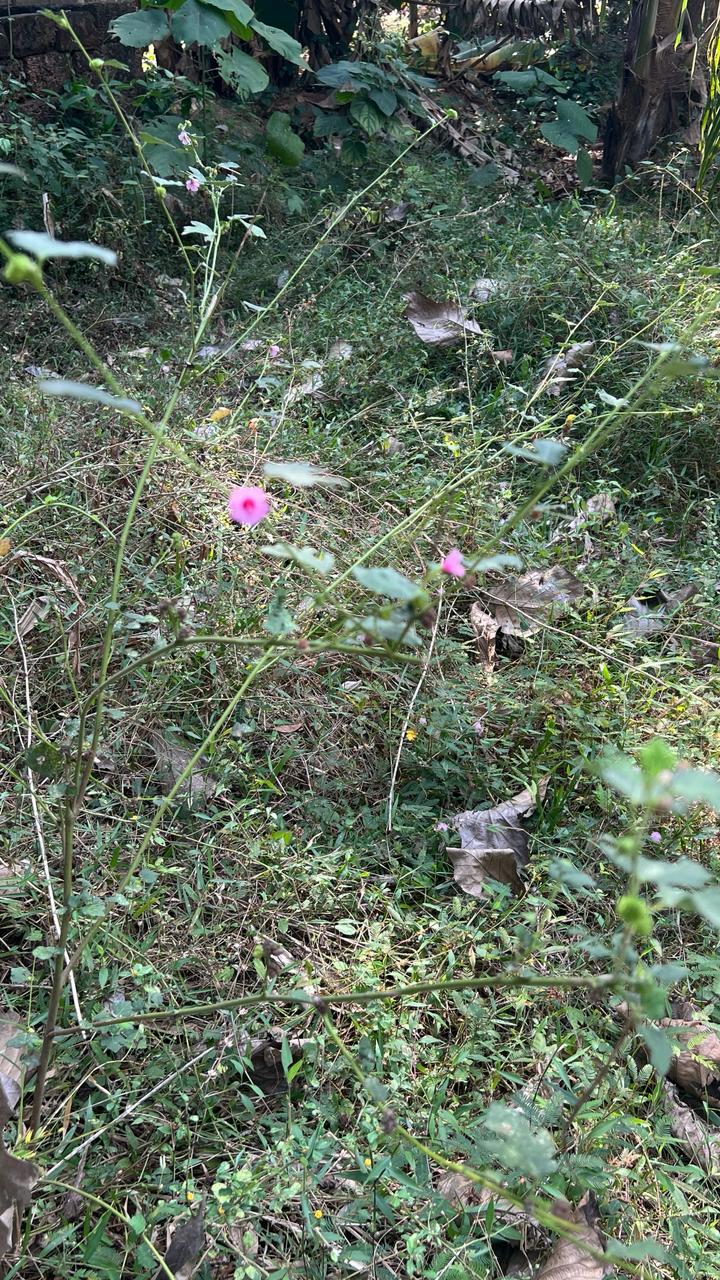Local Name:
Uram
Common Name:
Caesarweed
Scientific Name:
Urena lobata L.
Family:
Malvaceae
Vernacular Name:
Oorppan, Vattooram
Habit:
Subshrub
Habitat:
forests, wastelands, pastures, roadsides, and swamps
Distribution:
South East Asia and America
Flowering Season:
April to September
Fruiting Season:
May to October
Altitude:
up to 1400 meters
Uses:
Used as animal food.Used for fuels.Used for food.Medical uses.Environmental uses.
Part Used:
leaves, roots, and flowers
Method of Use:
Leaves:Used to prepare poultices for wounds, swelling, and burns. Also used in decoctions or infusions for treating fever, rheumatism, and as a diuretic.
Folklore:
folklore associated with its medicinal uses and seed dispersal. In traditional medicine, various parts of the plant are used to treat ailments like diabetes, abdominal colic, and gonorrhea. Its hooked seeds, which aid in dispersal, also inspired the design of Velcro.
Location:
kottakkal, parappur
GPS Coordinates:
11.0121° N, 75.9947° E
Collection Date:
2025-06-09
IUCN Status:
LC - least concern
Invasive Status:
invasive
Pollination Type:
self pollination and cross pollination (less)
Seed Dispersal:
Seed dispersal mainly by birds, animals often humanbeings unknowingly. The tiny spines on the fruits
Phytochemicals:
alkaloids, tannins, saponins, steroids, and reducing sugars
Description:
It's a plant with pink or purple flowers, broadly ovate to elliptic leaves, and spiny fruits. The leaves are simple, alternate, and broadly ovate, often with 3-5 shallow lobes. The leaves have a toothed margin, and both surfaces are covered in soft, short hairs. The flowers are small, pink or purple, and resemble those of hibiscus. They are solitary, borne on short stalks in the leaf axils, and have five petals. The fruits are spiny capsules, turning from green to brown as they mature. They split into five one-seeded segments (mericarps) and are covered in hooked spines. It's used in traditional medicine for various ailments, including rheumatism, coughs, edema, and as a diuretic

